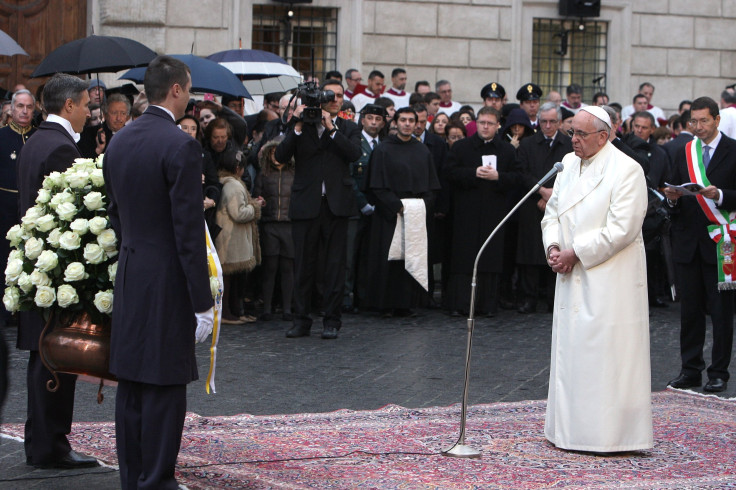Feast Of Immaculate Conception 2016: What Is The Holy Day Of Obligation And When Is It?

Just over two weeks before celebrating the birth of Jesus, Catholics will celebrate Thursday God enabling Jesus’ mother Mary to be conceived free of sin. The Feast of the Immaculate Conception is a major occasion in many countries throughout the world.
What does it celebrate? There is a widespread belief that the Immaculate Conception refers to the Jesus’ entrance into the world. In fact, it concerns the Virgin Mary. While it is believed that Mary’s conception of Jesus was virginal, it is said that Mary was conceived biologically. However, the Catholic Church teaches that God kept her free from “original sin” in the womb as it had been foreshadowed that she would bear Jesus Christ. In this way, she is said to be “full of grace.” It was formally defined in the Catholic Church by Pope Pius IX in 1854.
“The most Blessed Virgin Mary was, from the first moment of her conception, by a singular grace and privilege of almighty God and by virtue of the merits of Jesus Christ, Savior of the human race, preserved immune from all stain of original sin,” he said.
How is it celebrated? The Feast of the Immaculate Conception is a Holy Day of Obligation in the Catholic Church. These are the days on which practitioners are obliged to attend mass. The number of days of obligation varies between countries.
In the United States, the feast is one of six holy days of obligation. Two others also involve Mary — the Solemnity of Mary, Mother of God, celebrating her motherhood of Jesus, and the Assumption of the Blessed Virgin Mary, marking her entrance into heaven.
Where is it celebrated? It is believed that the Feast of the Immaculate Conception was first celebrated in Syria as early as the fifth century. In eight countries, it is now the patronal feast day, with those nations selected the Virgin Mary as their official patroness. In a number of countries, including Argentina, Italy and Spain, the feast is also a public holiday.
© Copyright IBTimes 2024. All rights reserved.





















